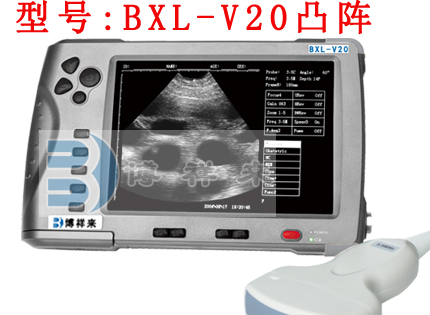The quality of veterinary B-ultrasound images is of great significance for disease diagnosis. Since the attenuation of ultrasound waves by soft tissues of animal bodies is roughly linear with the frequency, the high-frequency components in the echo information should be mainly obtained in the near field to improve the resolution and clarity of the image; and as the detection depth increases, the high-frequency components decay faster, causing the ultrasound waves to gradually shift to the low end of the frequency band. At this time, it is necessary to extract the low-frequency components in the echo information to obtain richer far-field veterinary B-ultrasound image information and achieve the best imaging effect within the full detection depth. The dynamic filter in the fully digital veterinary B-ultrasound system is used to automatically select the above frequency signals with diagnostic value, filter out the strong echo signals with low frequencies on the surface of the body and the interference with high frequencies in the deep part. The quality of the dynamic filter design is directly related to the resolution of the far-field and near-field imaging of the fully digital veterinary B-ultrasound system, and is a key component of the entire system.

Veterinary B-ultrasound BXL-V20
In analog veterinary B-ultrasound, the realization of the dynamic filter circuit generally uses the junction capacitance of the varactor diode to decrease with the increase of its reverse bias voltage, thereby changing the frequency of the frequency selection network. Although this method is relatively mature and simple, the spectrum characteristics of the frequency selection network are not accurate and it is troublesome to change, so it is not widely used now. In the fully digital veterinary B-ultrasound, dynamic filters are implemented based on the concept of matched filtering. In the signal processing process, the matched filter coefficients change dynamically with the change of the receiving depth. The digital filter uses a finite impulse response digital filter with a linear phase. The traditional FIR filter is implemented using a multiplication and accumulation hardware structure, and the filter implemented by this structure requires a lot of hardware resources. Some studies use a fully parallel distributed algorithm and add a multi-stage pipeline, while using a partition table technology to reduce the resource occupation of the lookup table. Since the coefficients of each filter in the dynamic filter are different, a dynamic lookup table is used to adjust the input coefficients of the filter in a timely manner.








